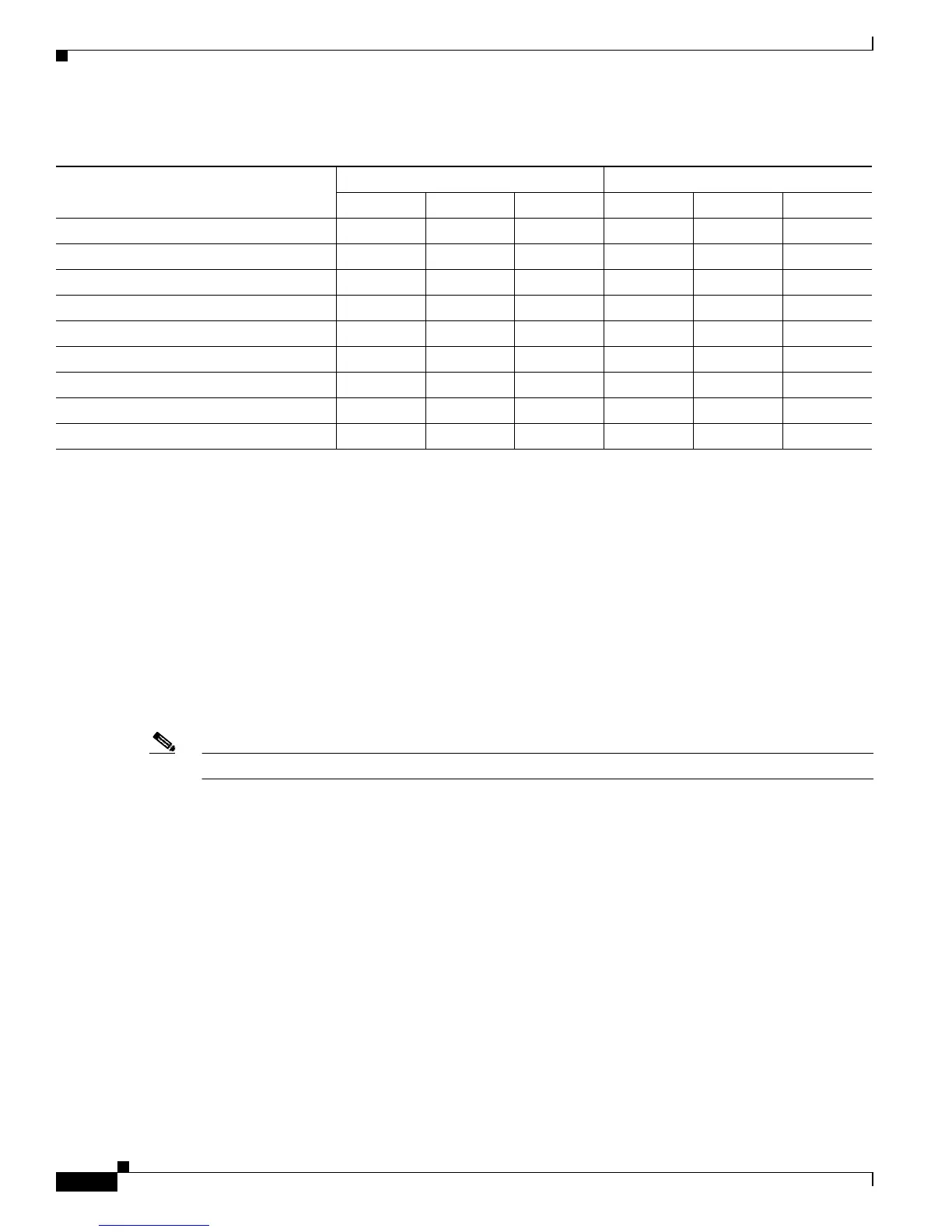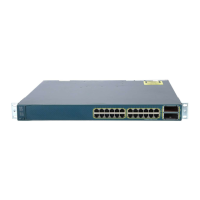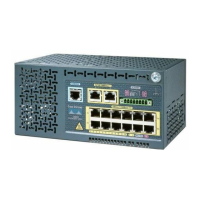8-2
Catalyst 3750 Switch Software Configuration Guide
78-16180-02
Chapter 8 Configuring SDM Templates
Understanding the SDM Templates
The first eight rows in the tables (unicast MAC addresses through security ACEs) represent approximate
hardware boundaries set when a template is selected. If a section of a hardware resource is full, all
processing overflow is sent to the CPU, seriously impacting switch performance. The last row is a
guideline used to calculate hardware resource consumption related to the number of Layer 2 VLANs on
the switch.
SDM Templates and Switch Stacks
All stack members use the same SDM desktop or aggregator template that is stored on the stack master.
When a new switch is added to a stack, as with the switch configuration and VLAN database files, the
SDM configuration that is stored on the stack master overrides the template configured on an individual
switch.
Note For more information about stacking, refer to Chapter 5, “Managing Switch Stacks.”
If the stack master is a desktop switch and a Catalyst 3750-12S running the aggregator template is added
as a stack member, the stack operates with the desktop template selected on the stack master. This could
result in configuration losses on the Catalyst 3750-12S if the number of TCAM entries on it exceeds
desktop template sizes.
If the stack master is a Catalyst 3750-12S switch using an aggregator template and a new stack member
is not a Catalyst 3750-12S, the stack member is not able to support the template that is running on the
stack master. The switch attempting to join the stack goes into SDM mismatch mode, the stack master
does not attempt to change the SDM template, and the switch cannot be a functioning member of the
stack.
Table 8-1 Approximate Number of Feature Resources Allowed by Each Template
Resource
Desktop Templates Aggregator Templates
Default Routing VLAN Default Routing VLAN
Unicast MAC addresses 6 K 3 K 12 K 6 K 6 K 12 K
IGMP groups and multicast routes 1 K 1 K 1 K 1 K 1 K 1 K
Unicast routes 8 K 11 K 0 12 K 20 K 0
• Directly connected hosts 6 K 3 K 0 6 K 6 K 0
• Indirect routes 2 K 8 K 0 6 K 14 K 0
Policy-based routing ACEs 0 512 0 0 512 0
QoS classification ACEs 512 512 512 896 512 896
Security ACEs 1 K1 K1 K1 K1 K1 K
Layer 2 VLANs 1 K1 K1 K1 K1 K1 K
